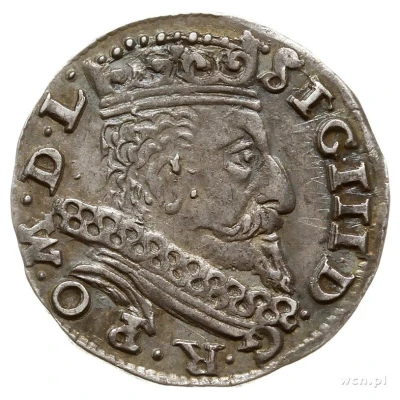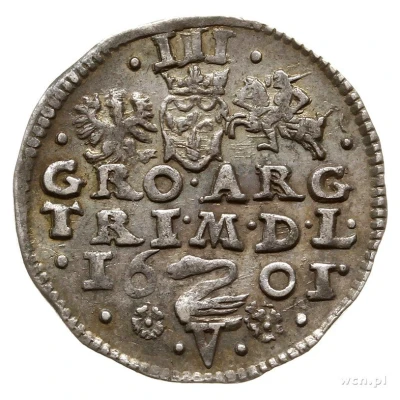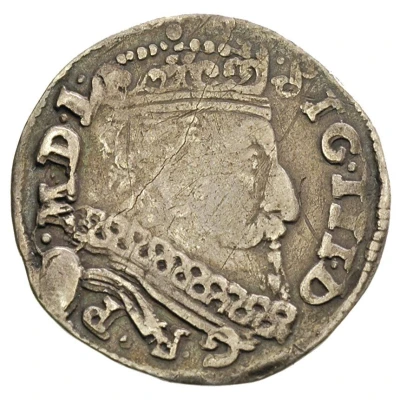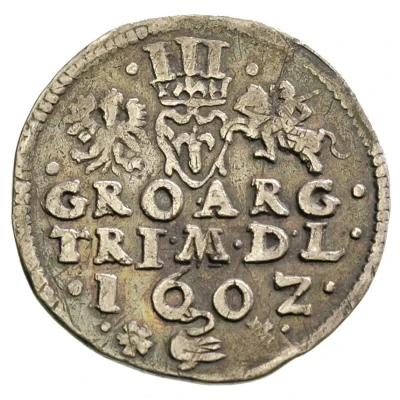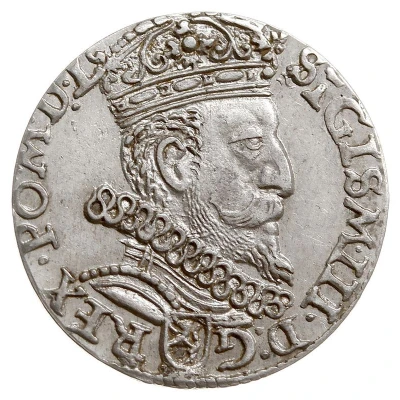
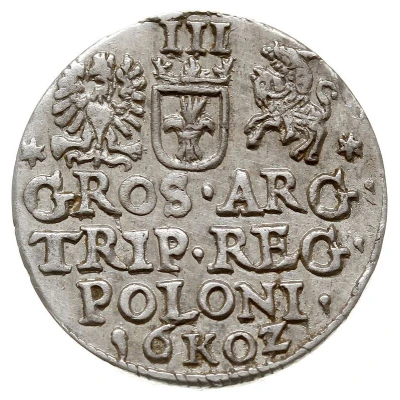

© Warszawskie Centrum Numizmatyczne s.j.
Trojak / 3 Grosze - Sigismund III Vasa Kraków; Lewart arms obverse
| Silver (.844) | 2.37 g | - |
| Issuer | Polish–Lithuanian Commonwealth |
|---|---|
| King | Sigismund III Vasa (Zygmunt III Waza) (1587-1632) |
| Type | Standard circulation coin |
| Years | 1601-1606 |
| Value | 3 Groschens (Trojak) (0.1) |
| Currency | First Zloty (1573-1795) |
| Composition | Silver (.844) |
| Weight | 2.37 g |
| Shape | Round |
| Technique | (Weight decreased to 2.19 starting 1604) |
| Demonetized | Yes |
| Updated | 2024-10-07 |
| Numista | N#186152 |
|---|---|
| Rarity index | 87% |
Reverse
INscription in three lines. Above, value (III) in ROman numerals, Polish eagle, Vasa arms and Lithanian rider. Date at bottom divided by mint mark.
Script: Latin
Lettering:
III
GROS ARG
TRIP REG
POLONI
16 K 02
Unabridged legend: Grossus argenteum triplex regni Poloniae
Translation: Silver three grosze of the Kingdom of Poland
Comment
Trojaks were produced under the authority of Zygmunt III at Polish mints (Kraków, Bydgoszcz, Lublin, Malbork, Poznań, Olkusz, Wschowa) with much variety. With the re-opening of the Kraków mint, a more standardized approach followed starting in 1601, and from the latter part of 1601 until 1606, this design prevailed, with only a few minor variations.In 1604 the weight specification decreased from 2.37 g. to 2.19 g. but fineness remained the same.
Iger K.01.2.a
Pictures: © tdziemia
Iger K.01.2.b
Iger K.02.1.a 160Z
Pictures: © WCN
Iger K.02.1.b 160(backward 2)
Pictures: © WCN
Iger K.03.1.a
Pictures: © tdziemia
Iger K.04.1.a
Pictures: © WCN
Iger K.05.1.a Normal date, 1605
Pictures: © tdziemia
Iger K.05.1.b Date 160J
Pictures: © WCN
Iger K.06.1.a
Pictures: © WCN
Iger K.06.1.b
Pictures: © WCN
Iger K.06.1.c
Pictures: © WCN
Interesting fact
The Sigismund III Vasa coin was minted during a time of great change in the Polish-Lithuanian Commonwealth. Sigismund III, who ruled from 1587 to 1632, was the last king of the Vasa dynasty and oversaw a period of political and religious upheaval. The coin's minting was likely a response to the growing need for currency as trade and commerce expanded in the region. Despite the challenges of the time, the coin remains a valuable piece of history and a testament to the resilience of the Polish-Lithuanian Commonwealth.
